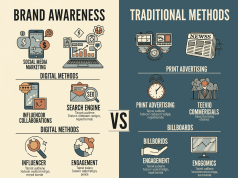In an increasingly digital world, advertising strategies continue to evolve with the emergence of new devices and platforms. Cross-device advertising has become essential for brands aiming to maintain a consistent message across various user interfaces, whether that’s on smartphones, tablets, desktops, or even smart TVs. This article delves into the complexities of cross-device advertising and offers insights on how to navigate them effectively.
Understanding Cross-Device Advertising
Cross-device advertising refers to the practice of delivering targeted ads to users across multiple devices. Given that consumers often switch between devices over the course of a single day, brands must ensure that their messaging is cohesive and relevant, regardless of the platform used.
The Importance of Cross-Device Advertising
User Journey Mapping: Customers don’t always complete a purchase in one session or on a single device. Understanding the customer journey involves tracking interactions across devices, which enhances customer experience.
Increased Reach: Consumers use multiple devices throughout the day. Advertising across these devices allows brands to maintain visibility and stay top-of-mind.
- Improved ROI: Effective cross-device strategies can lead to higher conversion rates and optimized spending as ads can be tailored to users’ preferences and behaviors on each device.
Key Challenges in Cross-Device Advertising
Despite its advantages, several challenges can complicate cross-device advertising strategies:
1. Tracking and Measurement
Tracking user behavior across devices is complicated by the need for robust identification methods. Cookies, while once a go-to solution, are now less effective due to privacy regulations and users’ increased awareness of data tracking.
2. Fragmented Data Silos
Data collected from various advertising platforms often exists in silos, making it challenging to create a unified view of user behavior. This fragmentation can lead to overspending and ineffective targeting.
3. Personalization at Scale
While personalization is crucial, achieving it across devices can be difficult. Brands must ensure that their strategies consider the unique contexts in which users engage with different devices.
4. Compliance and Privacy Concerns
With increasing regulations around data privacy (like GDPR and CCPA), brands must navigate complex legal landscapes when gathering and utilizing user data across devices.
Navigating the Complexities
To successfully implement cross-device advertising, brands should consider the following strategies:
1. Leverage Unified ID Solutions
Utilizing unified ID solutions helps bridge the gaps in user tracking across devices. These systems work by creating common identifiers that allow for consistent tracking and targeted advertising without compromising user privacy.
2. Invest in Cross-Device Analytics Platforms
Analytics tools designed specifically for cross-device tracking can offer insights into user journeys and preferences. Brands can identify which devices are most effective for different stages in the customer journey.
3. Build a Strong Data Infrastructure
Creating an integrated data infrastructure can help brands consolidate insights from various devices. This not only improves the effectiveness of ad targeting but also enhances personalization efforts.
4. Adhere to Privacy Guidelines
Ensure compliance with all regulatory standards regarding data usage. Transparency with users regarding data collection and its purpose can foster trust and enhance user engagement.
5. Tailor Content for Each Device
Understand the unique features and user contexts of each device. For instance, mobile users may prefer quick, digestible content, while desktop users might engage with longer, more detailed content.
6. Continuous Testing and Optimization
Implement A/B testing across devices to understand the effectiveness of different ad formats and messages. Continuous optimization based on performance data helps refine strategies in real-time.
Conclusion
Cross-device advertising presents both opportunities and challenges in today’s multifaceted digital landscape. Brands that can effectively navigate the complexities associated with tracking, data integration, and user experience will not only improve their advertising effectiveness but will also build lasting relationships with their customers. As technology continues to evolve, staying abreast of best practices in cross-device advertising will remain a crucial aspect of any successful marketing strategy.









